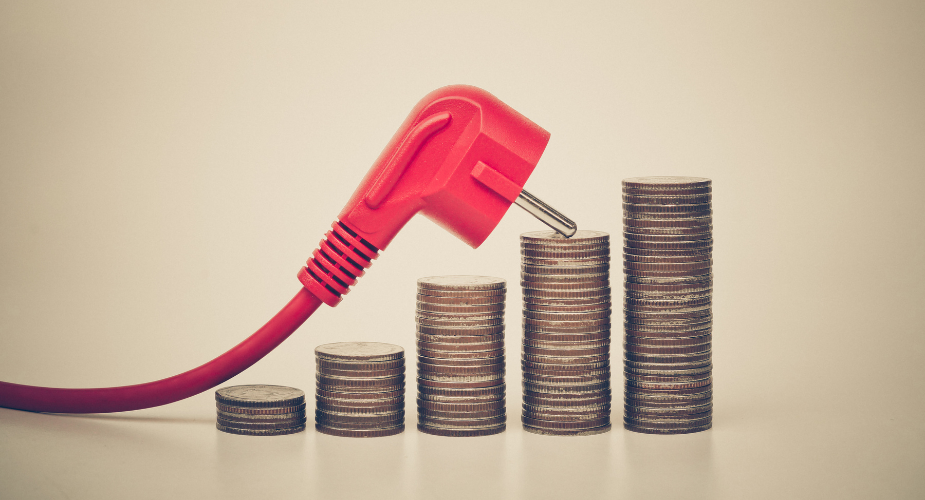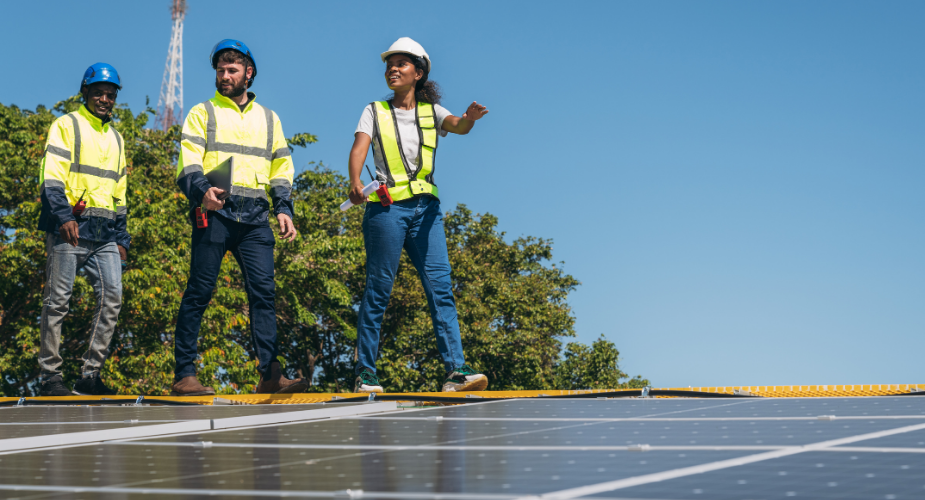As more households and businesses turn to solar energy, making the most of your investment has never been more important. While solar panels offer long-term savings, their performance depends on more than just sunlight as positioning plays a key role. Getting the angle right isn’t just a technical detail; it directly impacts how much energy your system can produce. By optimizing the tilt of your solar panels, you can capture more sunlight, generate more power, and reduce your reliance on the grid. In this article, we’ll explore how to find the best angle for solar panels.
What is the Best Angle for Solar Panels?
- Why the Angle of Solar Panels Matters
- General Rule for the Best Solar Panel Angle
- Factors That Influence the Best Tilt Angle
- Flat Roofs and Low-Pitch Solutions
- Tracking Systems and Automated Adjustments
- Tips for Maximizing Solar Efficiency
Why the Angle of Solar Panels Matters
Solar panels work by capturing sunlight and converting it into electricity through PV cells. When sunlight hits these cells, it triggers an electrical reaction that generates DC power. An inverter then converts this DC power into AC, which powers your home or feeds into the grid. For this to be efficient, the panels need to receive direct sunlight. And that’s where tilt angle becomes crucial. If your panels lie too flat or sit at an angle that doesn't align with the sun’s path, they won’t absorb as much energy. On the other hand, a well-angled panel will catch more sunlight during peak hours. Thus increasing your overall energy production.
The angle affects how long and how directly the sun’s rays strike the surface of your panels throughout the day and across the seasons. The best angle for solar panels can significantly boost output. Especially in regions where sunlight varies with the time of year. Optimizing your solar panel angle ensures that you get the best return on your investment by improving efficiency and reducing your reliance on traditional energy sources.
General Rule for the Best Solar Panel Angle
When it comes to setting the best roof angle for solar panels, a simple rule of thumb can guide you: match the panel angle to your latitude. This approach helps ensure your panels face the sun more directly throughout the year. However, if you have specific energy goals, you can fine-tune the angle for even better results. To maximize output in winter, tilt your panels a few degrees steeper, to better capture the lower-angled sun. For summer optimization, a flatter tilt works better, so you can reduce the angle by 10 to 15 degrees below your latitude.
While the standard latitude-based angle offers a good year-round balance, making seasonal adjustments can further improve your system’s performance. Especially if you’re using an adjustable mount or tracking system.
Factors That Influence the Best Tilt Angle
Finding what is the best angle for solar panels isn't a one-size-fits-all approach. Several factors work together to determine the most efficient setup for your system. By understanding these elements, you can fine-tune your installation to suit your home and energy needs.
Roof Pitch and Orientation
Your roof’s slope and the direction it faces have a major impact on solar performance. Ideally, panels should face true north in the Southern Hemisphere to receive the most sunlight throughout the day. If your roof already has a similar pitch to your location’s latitude, you might not need additional mounting adjustments. For flat or steep roofs, installers often use tilt frames to correct the angle.
Geographic Location
Where you live plays a key role in determining the optimal tilt. In general, the closer you are to the equator, the flatter your panels can be. Areas further south benefit from steeper angles due to the sun’s lower position in the sky.
Type of Solar Mount
Your choice between a fixed or adjustable solar mount also influences the best angle. Fixed mounts are set once and stay in place year-round, usually tilted to match your latitude. Adjustable mounts, however, let you change the tilt seasonally. Which helps you capture more sunlight and generate more energy across the year.
Energy Usage Patterns
Your energy consumption habits can guide how you adjust the tilt. If you use more electricity in the summer, you might angle your panels slightly flatter to increase output during that season. On the other hand, if your winter usage is higher, a steeper angle could help improve cold-season performance.
Flat Roofs and Low-Pitch Solutions
Installing solar panels on a flat or low-pitch roof comes with unique challenges. But with the right approach, you can still achieve the best roof angle for solar panels. These types of roofs often require additional planning to ensure the panels receive enough direct sunlight throughout the day. On flat roofs, panels typically don’t have a natural angle to work with. To solve this, installers use tilt frames or angled mounting systems that raise the panels to the ideal angle. These frames not only boost performance but also help panels self-clean more efficiently when it rains.
However, adding angled mounts can increase wind load, especially in areas prone to strong gusts. You’ll need to make sure your roof structure can support the extra force and weight. Professional installers assess wind zones and use ballasts or roof anchors to secure the panels safely.
Tracking Systems and Automated Adjustments
If you're looking to maximize your solar panel output beyond a fixed tilt, solar tracking systems offer a dynamic solution. These systems adjust the angle of your panels throughout the day to follow the sun's movement. Thus allowing for more consistent and direct sunlight exposure and could get the best angle for solar panels.
There are two main types of tracking systems:
-
Single-axis trackers follow the sun’s path from east to west across the sky.
-
Dual-axis trackers adjust both the horizontal and vertical angles, tracking the sun’s position more precisely throughout the day and across seasons.
Pros:
-
Higher energy yield throughout the day
-
Better performance during mornings and afternoons
-
Ideal for large-scale ground-mounted installations
Cons:
-
Higher upfront and maintenance costs
-
More complex installation and moving parts that may require servicing
-
Not ideal for all roof types, especially in residential settings
Before committing to a tracking system, weigh the cost vs. benefit carefully. If you have limited space and want maximum efficiency, a tracker could deliver long-term gains. However, a well-positioned fixed-tilt system offers better value with fewer complications. In most residential applications, a fixed system set at the optimal angle is usually more cost-effective and easier to maintain.
Tips for Maximizing Solar Efficiency
Getting the angle right is just one part of the equation. To truly make the most of your solar energy system, you need to consider the quality of your panels. Also, you need to maintain them properly. And the optimal location is also important. Here are some practical tips to help you boost your system’s performance year-round.
Use Recommended Solar Panels Only
For maximum efficiency, always choose high-quality panels designed for reliable, long-term performance. Even though you know the best angle for solar panels, a reliable solar panel system is still a difference. One top recommendation is the Nature's Generator 410 Watt Monocrystalline Solar Panel (2 Pack). This solar panel set delivers excellent power output and efficiency, making it a solid choice for both off-grid and hybrid solar setups.
Why It’s Effective: These monocrystalline panels use high-efficiency solar cells that perform well even in low-light conditions. With a durable anodized aluminum frame and a weather-resistant build, they can handle harsh climate while maintaining consistent energy production.
Key Features and Specs:
-
410W power output per panel
-
High-efficiency monocrystalline solar cells
-
Foldable, adjustable tilt mount for optimal sun exposure
-
IP65-rated junction box for weather resistance
-
MC4-style connectors for easy integration
-
Lightweight, corrosion-resistant aluminum frame
By using panels like these, you’re already giving your system an edge in both performance and longevity.
Clean and Maintain Your Panels Regularly
Dust, leaves, and bird droppings can block sunlight and reduce output. Clean your panels with water and a soft cloth or brush every few months, or more often if you're in a dusty area. Always follow manufacturer recommendations to avoid damaging the surface.
Ensure Panels Are Not Shaded During Peak Sun Hours
Shading can significantly drop your energy production. Trim trees or move any obstacles that block sunlight between 10am and 3pm, when solar gain is at its highest.
Consult with a Professional for Site-Specific Optimization
Every roof is different. A qualified solar installer can assess your roof pitch, orientation, and local weather conditions to determine the ideal tilt, panel placement, and inverter setup. This ensures you get the best return on your solar investment.
Conclusion
Choosing the best angle for your solar panels plays a critical role in maximizing your system’s efficiency. When you position your panels correctly, you allow them to absorb more sunlight, generate more power, and ultimately lower your energy bills. Also, investing in high-quality panels, like the Nature’s Generator 410W Monocrystalline Solar Panel, further boosts your system’s output. With the right angle and proper maintenance, your solar energy system can deliver maximum efficiency and long-term savings.






 10,000W LIFEPO4
10,000W LIFEPO4










